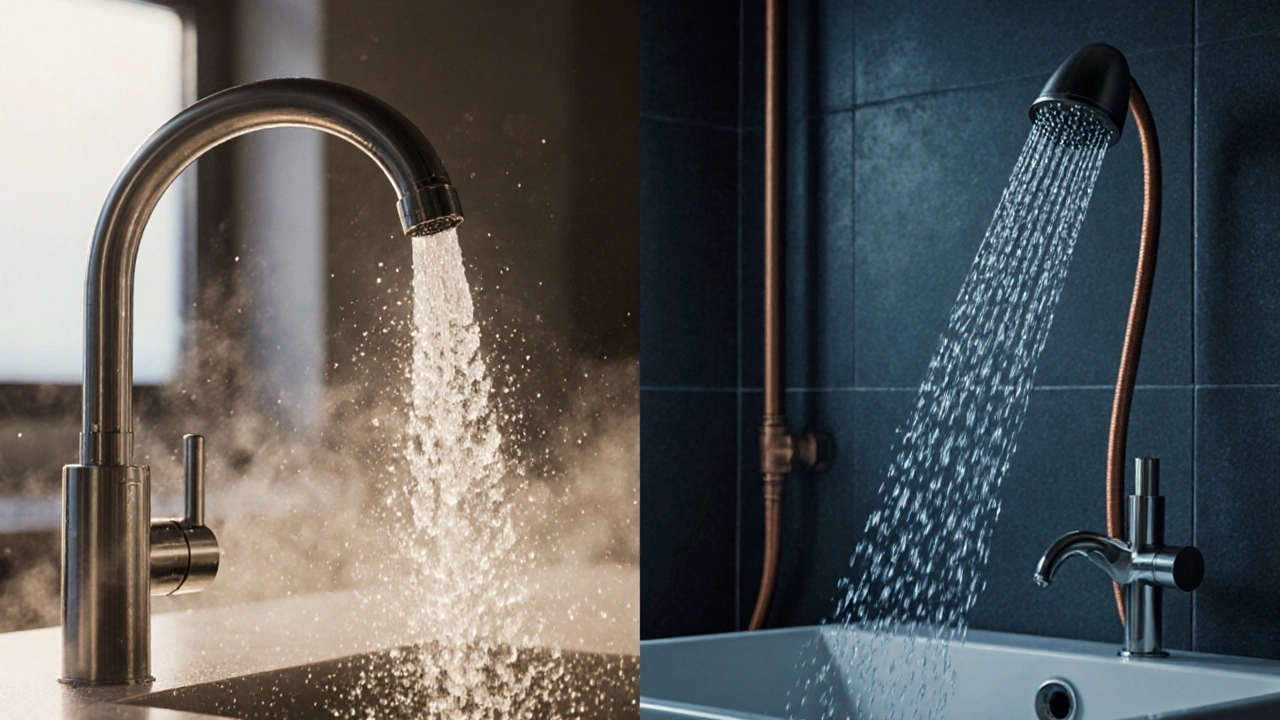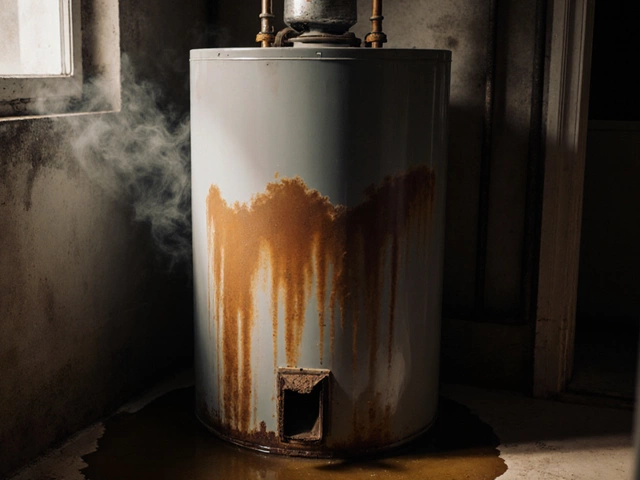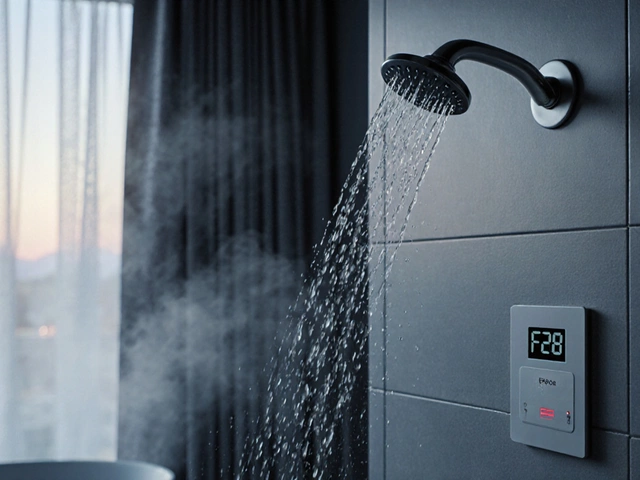Hot Water Temperature Diagnostic Tool
Temperature Reading
Enter the water temperatures at your kitchen and bathroom fixtures to diagnose potential issues.
Diagnostic Results
Likely Causes
Recommended Actions
Key Takeaways
- Temperature loss in the bathroom is usually caused by a faulty mixing valve, poor pipe insulation, or an unbalanced pressure system.
- Start with simple checks: run water longer, feel pipe temperature, and inspect faucet cartridges.
- Fixes you can try yourself include adjusting the anti‑scald valve, adding pipe insulation, or cleaning faucet aerators.
- If the problem persists after these steps, the water heater thermostat or a hidden leak may need professional attention.
- Regular maintenance - flushing the heater and checking pressure‑balancing valves - prevents the issue from returning.
When the faucet in the kitchen delivers steaming water but the shower in the bathroom leaves you shivering, you’re dealing with a classic hot water not hot in bathroom dilemma. Hot water temperature issue is the condition where hot water reaches some fixtures at the correct temperature while others receive lukewarm or cold water. The symptom points to something in the distribution system rather than the heating source itself. Below we break down why this happens, how to pinpoint the culprit, and what you can fix without calling a plumber.
What Makes Hot Water Feel Different in Two Rooms?
The water heater - whether it’s a water heater is a device that heats and stores water for household use or a tankless model - usually supplies water at a set temperature (often 120‑140°F/49‑60°C). Once heated, water travels through a network of pipes to every tap. Along that journey a few things can cause temperature loss:
- Length and material of the pipe run - longer runs or copper that isn’t insulated can shed heat.
- Mixing or anti‑scald valves - many bathroom fixtures have built‑in devices that blend hot and cold to prevent burns.
- Pressure‑balancing valves - these maintain consistent temperature when water pressure fluctuates.
- Blocked or corroded faucet cartridges - debris can restrict hot water flow.
- Thermostat setting on the heater - an inaccurate thermostat may not actually reach the set temperature.
Because the kitchen faucet is usually closer to the heater and often lacks a mixing valve, it’s common to see hot water arriving there first and hotter.
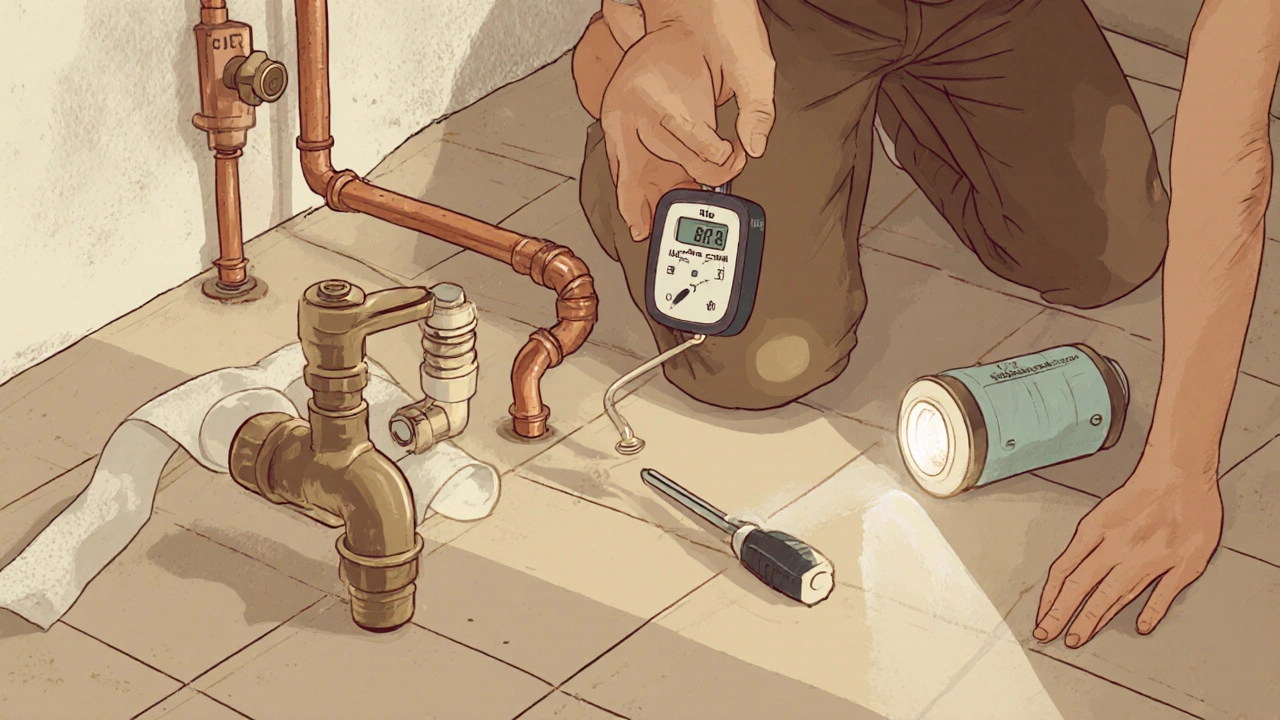
Common Causes Ranked by Likelihood
| Cause | How It Affects Temperature | Typical Fix |
|---|---|---|
| Faulty mixing valve (anti‑scald) | Blends too much cold water before it reaches the shower | Adjust or replace the valve |
| Poor pipe insulation | Heat dissipates over long runs, especially in unheated spaces | Wrap pipes with foam or foil insulation |
| Pressure‑balancing valve mis‑set | Cold water spikes when someone flushes a toilet, pulling hot water down | Re‑calibrate or swap for a thermostatic valve |
| Clogged faucet cartridge | Restricts hot‑water flow, making it feel lukewarm | Clean or replace the cartridge |
| Water heater thermostat offset | Actual water temperature lower than set point | Test with a thermometer, adjust or replace thermostat |
Step‑by‑Step Diagnosis
Before you start unscrewing anything, grab a thermometer and a timer. Follow these steps:
- Check the temperature at the kitchen faucet. Let the water run for a minute, then record the reading.
- If it reads 120°F (49°C) or higher, the heater is doing its job.
- Measure at the bathroom shower. Run the water for the same duration. Note the temperature difference.
- A drop of more than 20°F (≈11°C) flags a distribution issue.
- Feel the pipes. Locate the hot‑water pipe that feeds the bathroom (often in the wall or under the vanity). If it’s cool to the touch, insulation is likely missing.
- Inspect the shower valve. Many modern showers have a mixing valve is a valve that blends hot and cold water to a set temperature and prevent scalding. Remove the handle (usually two screws) and look for a small adjustment screw labeled “hot” or “cold blend”. Turn it a quarter turn toward hot and test again.
- Test the pressure‑balancing valve. If the bathroom has a single‑handle thermostatic cartridge, try a different shower head or a handheld sprayer. If the temperature stabilizes, the original cartridge may be faulty.
- Check for leaks. A hidden leak in the hot‑water line can reduce flow and temperature. Look for damp spots on walls, ceilings, or under the floor around the bathroom.
Every step either confirms a suspect or eliminates it, narrowing the field quickly.
DIY Fixes You Can Try Today
Based on the diagnosis, these are the most common tweaks homeowners can handle safely:
- Adjust the anti‑scald valve. Use a flat‑head screwdriver on the adjustment screw. Turn clockwise for more hot water, counter‑clockwise for less.
- Insulate exposed pipes. Purchase ½‑inch foam pipe wrap from any hardware store. Wrap from the heater to the bathroom, securing with zip ties.
- Clean faucet aerators. Unscrew the aerator, soak in vinegar for 30 minutes, scrub gently, then reinstall.
- Replace a clogged cartridge. Shut off the water supply, disassemble the faucet, pull out the cartridge, and swap for an identical replacement.
- Swap a pressure‑balancing valve. If the valve feels stuck or the adjustment screw is missing, replace the whole assembly - usually a ¼‑inch threaded component that slides into the wall.
These fixes take under an hour each and require only basic tools: a screwdriver, pliers, and a pipe‑insulation kit.
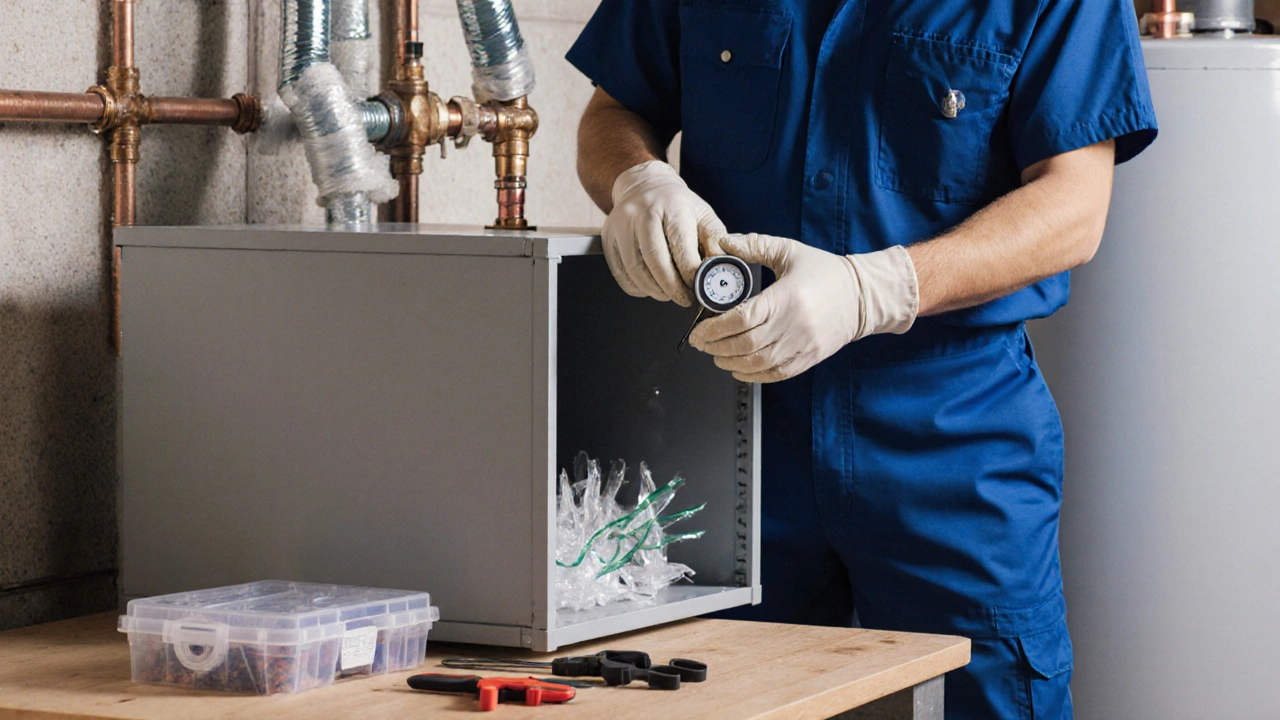
When DIY Isn’t Enough - Call a Pro
If after the above steps you still get lukewarm water, the fault likely lies deeper:
- Water heater thermostat malfunction. A mis‑reading thermostat can keep the water cooler than the set point. Professionals have calibrated test equipment to verify the sensor.
- Internal pipe corrosion or scaling. In older homes, mineral buildup inside copper pipes cuts down flow dramatically.
- Complex pressure‑balancing system. Some homes use a central “home‑wide” pressure‑balance manifold. Adjusting it requires knowledge of hydraulic principles.
Attempting to tinker with the heater’s internal components without training can void warranties or cause leaks. A licensed plumber can safely replace thermostats, flush the tank, or re‑route piping if needed.
Prevention - Keep Hot Water Consistent
Regular upkeep stops the problem before it starts:
- Flush the water heater once a year to remove sediment that can cause uneven heating.
- Inspect and tighten any loose pipe fittings every six months.
- Replace aging mixing valves every 5‑7years, especially in homes with children.
- Maintain indoor temperature in unheated areas (like basements) during winter to reduce heat loss in pipes.
These habits cost pennies but save you the frustration of a cold shower.
Frequently Asked Questions
Why is the water hot in the kitchen but cold in the bathroom right after the heater turns on?
The kitchen tap is usually the closest point to the heater, so hot water reaches it first. The bathroom fixture often has a mixing valve that starts with more cold water, or the longer pipe run lets heat dissipate before it arrives.
Can I fix a faulty mixing valve myself?
Yes, most residential mixing valves have an external adjustment screw. Turn it a quarter turn toward hot, test, and repeat until the water feels right. If the valve is corroded or stuck, replace the whole cartridge - a simple DIY job.
Does pipe insulation really make a difference?
Absolutely. Insulating the hot‑water line can retain 5‑10°F (≈3‑6°C) of heat over a 50‑foot run, noticeably warmer water at the far‑end fixture.
What temperature should my water heater be set to?
Most experts recommend 120°F (49°C) - hot enough for comfortable showers but low enough to prevent scalding and reduce energy use.
If I hear a ticking noise in the bathroom faucet, is that related?
A ticking sound often signals a worn cartridge or a failing anti‑scald valve. Replacing the cartridge usually stops the noise and restores proper temperature.
By following the diagnostic steps, trying the easy fixes, and knowing when to call a professional, you can turn those chilly bathroom showers into comfortably hot experiences again.
